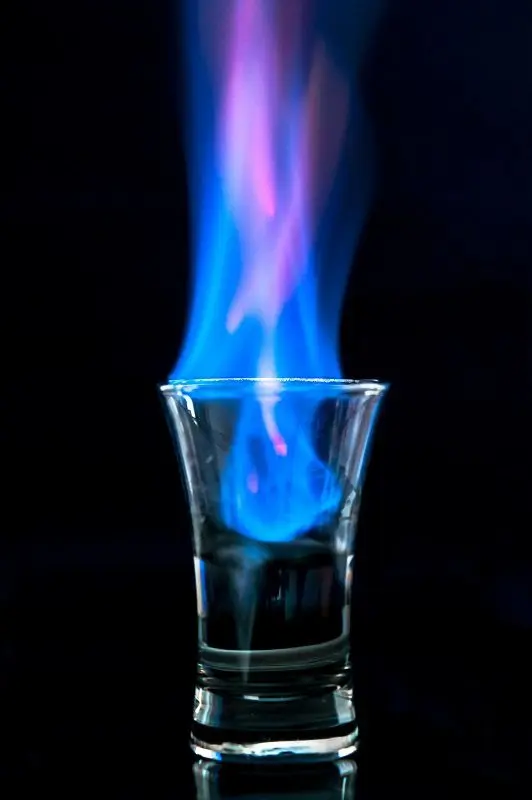Since the times of the USSR, many of our citizens have been accustomed to checking the quality of vodka and moonshine by setting it on fire. Indeed, good vodka should burn. But to properly check the drink, you need to know some features, otherwise even the highest quality product will seem like a fake.
Let’s start with some school chemistry. Theoretically, vodka consists of only two components: alcohol and water. But in practice, the composition will necessarily contain third-party impurities (fusel oils, esters, etc.), their concentration depends on the degree of purification. Water and impurities do not burn.
When ignited, not all vodka burns, but only alcohol vapors. The higher the concentration of alcohol, the more intense the burning will be. But before lighting the vodka, it is necessary to warm it up to room temperature so that the alcohol begins to evaporate. Another rule is to take a container with a large open surface, such as a lid, spoon or saucer. This will ensure a constant supply of oxygen.
Unlike gasoline, vodka does not quickly ignite. It burns with a light blue flame near the surface without generating much heat. Flame intensity and color saturation depend on the concentration of alcohol. If it is not enough, the fire will be barely noticeable and will quickly go out. You should also consider the presence in the formulation of other substances that can block the evaporation of alcohol, preventing combustion.

It has been practically established that vodka starts to burn if it contains more than 30 degrees of alcohol. But a normal flame can only be seen in a drink whose strength is above 40 degrees.
Attention! A green flame indicates methyl alcohol, drinking such a liquid is deadly.
You can distinguish good vodka from a fake in the following way: pour a little of the studied drink into a saucer or spoon, heat it up to 20-30 ° C, set it on fire with a match. If there is no flame, this is a sign of poor quality.
When a fire appears, you need to wait until it goes out on its own. The remaining fluid is then examined. It should be transparent and not have a sharp unpleasant odor. Only water should remain. If an oily liquid has formed at the bottom, there are third-party impurities in front of you, the fewer of them, the better.
Not only vodka is on fire, but also other strong alcoholic drinks, such as cognac, whiskey, sambuca and absinthe. But for checking their quality, ignition is ineffective. The fact is that due to the complex composition of these drinks, the products of their combustion cannot be analyzed at home. The remaining liquid is always cloudy and smells unpleasant.









